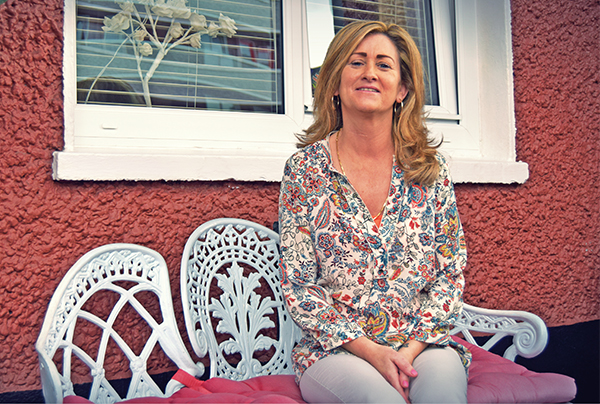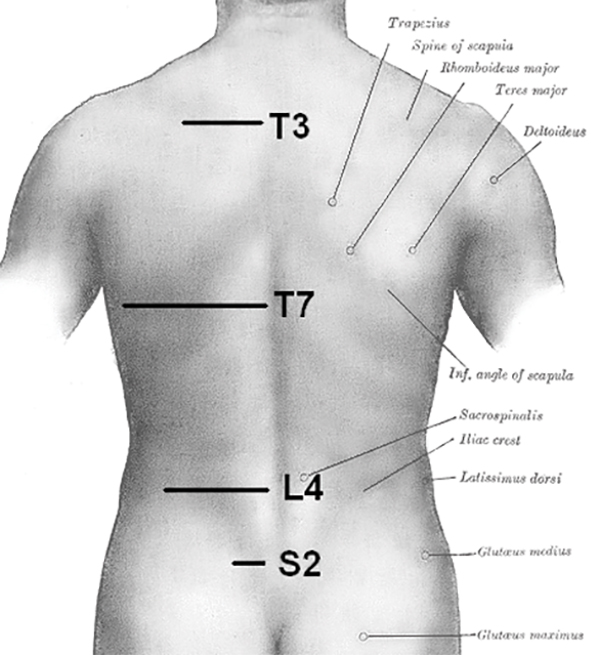
Above: Martina Curtis.
Photo: Kevin O’Gorman.
According to Spinal Injuries Ireland (SII) one person every week in Ireland is told they are unable to walk.
SII was set up 23 years ago by sufferers who saw a huge gap in the health service for sufferers who had no home care package. It relies on 60% fundraising to operate it’s service. With fundraising and help from the National Rehabilitation Hospital (NRH) in Dun Laoghaire and the HSE, the service was up and running on the site of the NRH.
NewsFour set out to learn more and met with one of the local users of SII service. How does someone in our community cope with a spinal injury, what system is in place by the health service and how does SII help that person?
The spine works as a mechanism for the brain to send messages to the whole body and for the body to send messages back to the brain. These messages back to the brain could include pain. The messages from brain to body are fundamental things like walking.
If the spine is injured, then this system is disrupted. This results in partial or complete paralysis. Extent of damage can be different due to areas affected on the spine. Complete means the cord is completely severed meaning no feeling or movement. Incomplete some messages can get through. resulting in some feeling. The amount of feeling and movement loss depends on where the spine is damaged.
SII informed NewsFour that local user Martina Curtis would like to tell us her story. Before meeting Martina and having read the damage that spinal injuries can do to the nervous system, my sympathies were already with her.
When Martina opened the door, I saw how much benefit SII has been to her. Martina was standing upright, strong, confident and independent and so surprised me that I asked if I had the right place. Martina was able to walk, talk and make me coffee. However, I learned later in our conversation that she has no feeling for a burning sensation on her skin on one side and she has to be extra careful.
Martina has a son and daughter and now lives with her daughter in her George Reynolds apartment, with her son close by in his grandmother’s house. Martina suffered her C5/C6 spinal injury from two unfortunate accidents which occurred very close to each other. The first incident was a car accident but at the time her injuries weren’t considered serious. The next incident as Martina recalls left her with her spinal column partially severed.
“I was at a friend’s 50th birthday party and was helping my young nephew who needed a helping hand on the trampoline. So I was bouncing with him when I was called from the house and with that I turned my neck and fell backwards on the trampoline. I passed out for a short time and when I came to I was alone lying on the trampoline and unable to speak. After a while someone came over to see if I was ok and I was able to say ‘get an ambulance’.”
NewsFour spoke with CEO of SII, Fiona Bolger, who explained how the system works for people who suffer spinal injuries. “First you are sent to the acute hospital which is the Mater Hospital for all of Ireland. You are kept here until you are medically stable which can take up to 6-8 weeks, and because the NRH is the only one of its kind in the country you are put on a long waiting list.”
Bolger also mentioned that there has also been an increase in the numbers of people who have suffered non-traumatic spinal injuries due to cancers who are treated there too.

Left: Orientation of vertebral column on surface. Image courtesy Mikael Häggström.
In response to the budget of 2017, senator John Dolan CEO of the Disability Federation of Ireland commented: “Disabled people and their families don’t just need measures to relieve pressure from them. They need measures to ensure they get out of the spiral of poverty and exclusion. This budget could have achieved that fairness and kickstarted their recovery, but it does not do so by any measure.”
Fiona Bolger, CEO of SII, told NewsFour that they carried out a study in 2013 that showed 76% of spinal injury sufferers are unemployed and 40% live on or below the poverty line. “We provide a pathway of support from injury to inclusion in society, and we do this through our activity programme and vocational programme,” she stated.
“Our activity programme has social outings, including cinema and boat trips and our vocational programme prepares people to go back to work or education. There are 1,800 spinal injury sufferers in Ireland and we have only six community officers to serve the entire country, who work on an active one-to one basis”.
Martina Curtis praised her community officer Siobhan: “At any time I need Siobhan she will come for me.” Due to the nature of Martina Curtis’s injury where her sensations come and go and with that pain, she found speaking with fellow users on how to handle those moments were very helpful.
If you would like to help Spinal Injuries Ireland you can visit www.spinalinjuries.ie and click ‘get involved’ where you can organise an event to raise funds, volunteer or donate to the service.
By Paul Carton



